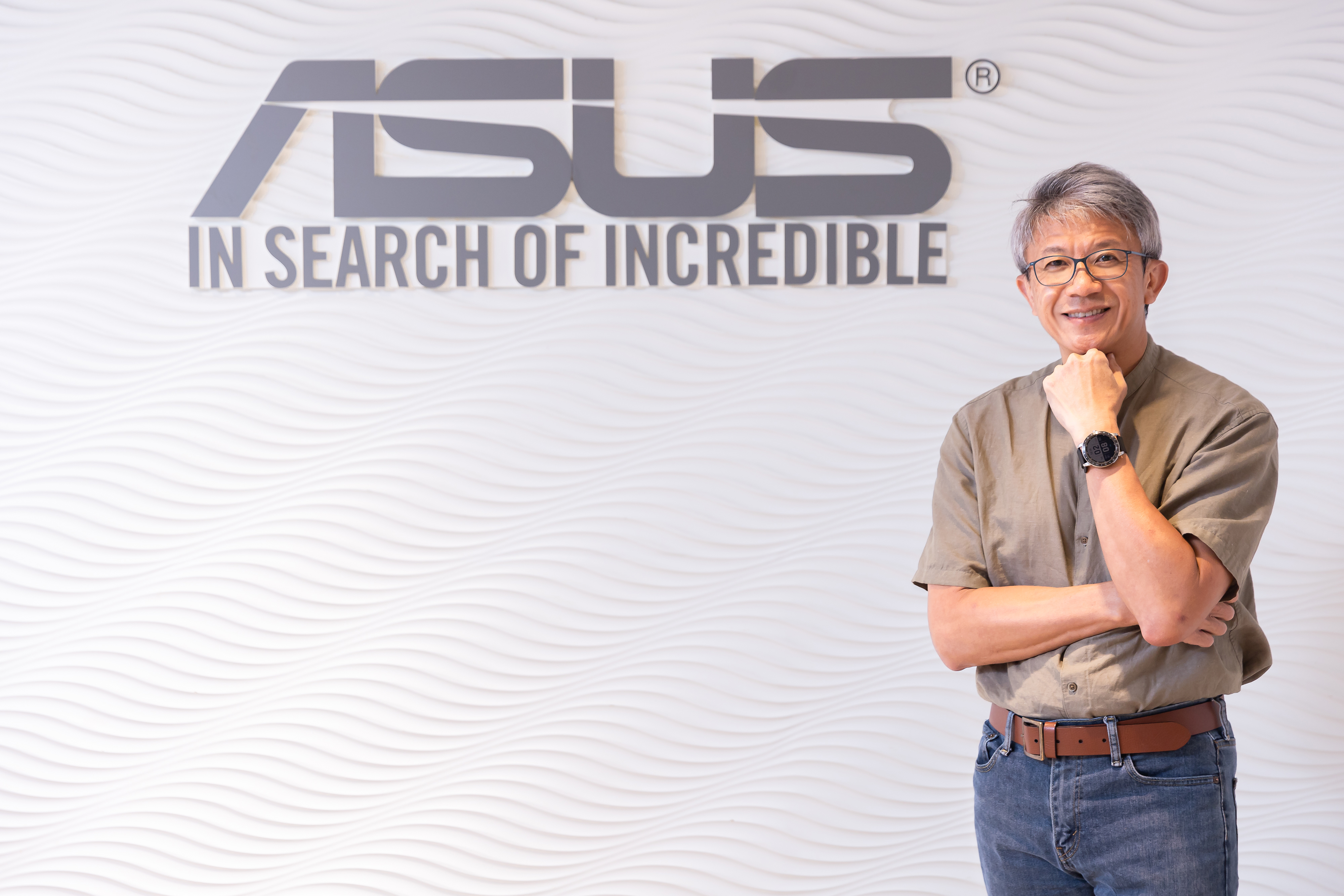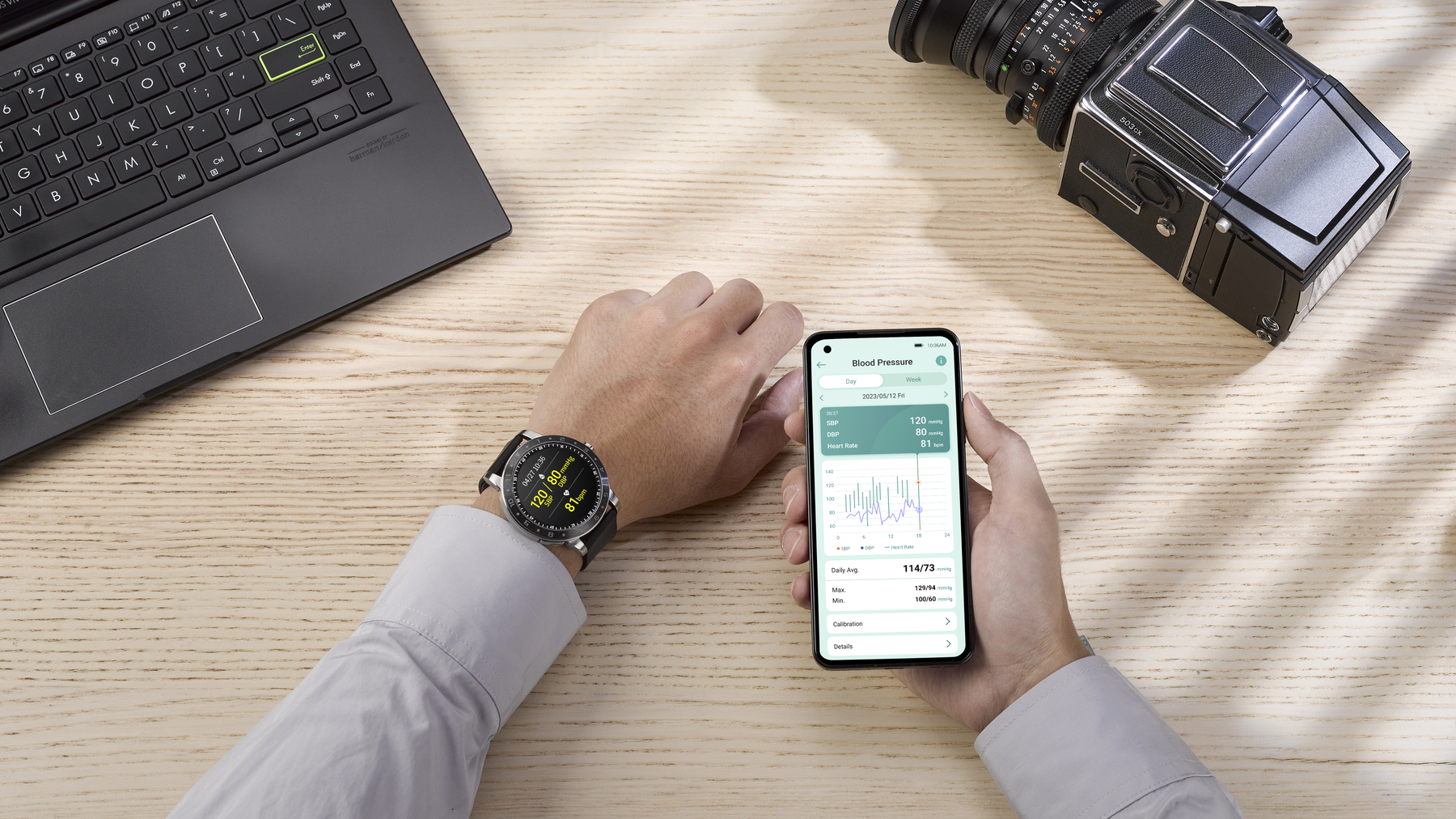
The ASUS VivoWatch: Modern platform for health management
The ASUS VivoWatch, with a comprehensive set of smart functions for measuring precise blood oxygen levels, blood pressure, and heart rhythm, became a superior assistant for health management thanks to its accurate physiological measurement features at the launch of the first-generation product. Chief Operating Officer and Global Senior Vice President of ASUS Min-Chieh, (Joe) Hsieh points out that the main thing that sets the VivoWatch apart from ordinary smart watches on the market is, from the user's perspective, that ASUS positioned the device as a modern personal health management platform right from the beginning, providing value-added health services to companies and end users in various fields. In recent years, ASUS has expanded the scope of the VivoWatch and launched cross-domain cooperation with medical care institutions, the insurance industry, and the construction industry to further strengthen its product positioning.
Hsieh says that in recent years health awareness in the Taiwanese public has increased, and devices such as blood pressure monitors, blood glucose meters, and blood oxygen level monitors, which can only detect certain current vital signs, are no longer able to meet the health needs of modern consumers. That is where the ASUS VivoWatch comes in—it has a battery life of up to 14 days, can closely monitor health data over long periods of time, and adds in personal life information to provide more value-added care. That is why it has become a major choice for most companies in the field building smart systems.
ASUS VivoWatch has variously demonstrated its business value in different fields, pharmaceuticals and insurance being two of the most representative. Pharmaceutical companies, for example, must closely monitor the vital signs of subjects during the development stages of new drugs. The VivoWatch can collect physiological data over long periods of time, helping pharmaceutical companies obtain and comprehend relevant data and evaluate the overall effects of new drugs. In another example, insurance spillover policy services were launched for Taiwanese insurance companies, and these policies require policyholders to have better control over their own health management and achieve standard health values through exercise and physical examinations. Their success earns them discounts, such as premium rebates and increased insured amount. The VivoWatch can obtain policyholders' physiological data, in real time, continuously, and compliantly, helping insurance companies to accurately design premium structures and establish a digital health ecosystem focused on the individual.
And it is not just being used in pharmaceuticals and insurance—ASUS VivoWatch has also begun to be used in occupational safety. Recently, legislation from the governments of Singapore and Hong Kong require that manufacturing, construction, and other industries introduce health monitoring technology. Manufacturers have been adopting the VivoWatch to monitor the physical conditions of workers in factories and construction sites in real-time to prevent accidents.
The ASUS VivoWatch has many successful applications in the medical field. During the COVID-19 pandemic, Taoyuan General Hospital had COVID patients in the isolation room wearing VivoWatches, which transmitted vital signs, such as heartbeat and blood oxygen, to the back end system. This reduced the workload of medical staff and cut down the rate of contact with COVID-19 patients. This very same model, using technology to improve the quality of medical services and solve the current shortage of medical manpower, can also be applied to emergency rooms or other isolation wards.
In addition, the ASUS VivoWatch also has various value-added benefits in the medical care field. Recently, Show Chwan Memorial Hospital (SCMH), as well as other medical institutions have used it for long-term healthcare patients and customers. VivoWatch's continuous and stable data collection can help these institutions provide long-term health management services for patients. They only need to wear the device at home, and hospitals can remotely monitor their vital signs. SCMH uses the VivoWatch and the ASUS HealthConnect APP in the hospital's EVIP advanced health exam service. The VivoWatch continually detects the customer's vital signs between two physical examinations and uploads the data to the cloud. That way, the hospital's dedicated personal manager can continually observe the customer's health status.
The examples mentioned above show how mobile wearable devices have been applied in various fields in the industry as an important tool that can raise operational efficiency and create new business models. However, Hsieh also pointed out that these applications must first comply with medical regulations and must be very effective. The ASUS VivoWatch goes beyond the logic of most smart watches by putting the focus on medical institutions and users; it puts the power of ASUS software and hardware into the logic of modern personal health management platforms, and helps operators in various fields to develop value-added models and create all-around beneficial situations combining personal health care and industrial application development.

COO and Global Senior Vice President of ASUS Min-Chieh (Joe), Hsieh

VivoWatch differs from typical smartwatches on the market as it is positioned as a modern personal health management platform.
